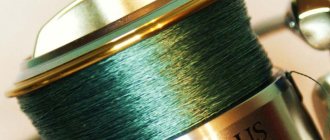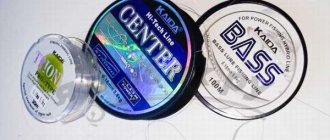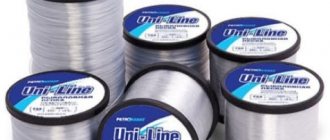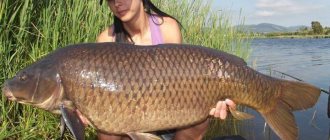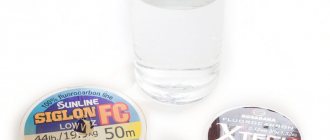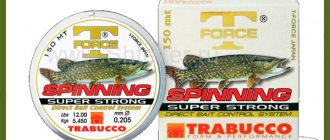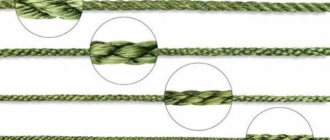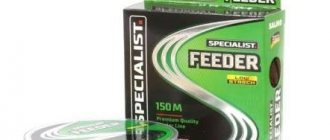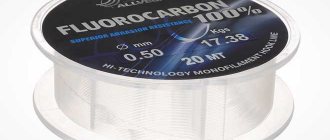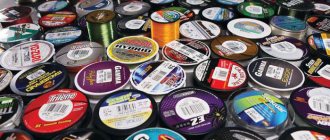Winter... Our fisherman, triumphant, makes his way on the first ice... Yes, yes, it’s time to update not only the path, but also the equipment, tackle, and don’t forget a warm hat. The main update that will not be delayed is fishing lines, and the article is dedicated to them. Fishing lines for winter fishing differ significantly from summer ones, in much the same way as winter car tires differ from summer ones. Only the consequences of untimely replacement for a fisherman are not so critical. However, this does not mean that you can rely on chance in such a situation and go fishing in winter with a thin summer fishing line and hope for a good catch. The catch might have been good, but the fishing line would not hold up, and this very good catch would break and happily float to another fisherman, who took the time to change gear and his fishing line would be able to withstand a large trophy.
So, let's get down to specifics. It is very difficult to create a rating of winter fishing lines, since there are many different ones, they are used depending on the type of fishing - jig or winter fishing line for trolling, they are divided by type - braided
line,
fluorocarbon
or
monofilament
line.
You cannot compare the incomparable and give primacy to one thing, choose the best winter fishing line from different types. You can only compare things of the same type. Therefore, our article will be in the form of a review, and after reading, you yourself will choose the most suitable type of fishing line specifically for your needs. Line VS90-3D 30 m chameleon blue EXPERT 164 for 1 pc.
Line XILO 50 m COLMIC 585 for 1 piece. Pro-Max Ice Stop line 30 m, transparent Momoi 110 for 1 pc. Line WILDCAT 50 m (winter) YGK 363 for 1 piece. Fishing line Ice Profi Nylon Transparent 30 m Helios 95 for 1 pc. Winter fishing line PA ULTRA SOFT 30m AQUA 52 for 1 pc. Winter fishing line RUBICON Ice Magic Line (steel gray) 30m Rubicon 145 for 1 pc. Winter line NL ULTRA PERCH (Perch) 30m AQUA 52 for 1 pc. Line Dragon HM80 Competition 50m/0.16mm Dragon 279 for 1 pc. Winter fishing line IRIDIUM 30m AQUA 50 for 1 pc. See all monofilament winter fishing lines
What is monofilament line
Familiar to every angler, monofilament fishing line for spinning rods and float rods is a product of the chemical industry, made from polyamide materials. To a greater extent, it is nylon, nylon or polyethylene from which modern fishing threads are produced. The Americans became one of the first producers of synthetic cords back in the 30s of the last century, and after them these innovative technologies were adopted in the post-war period by European and Japanese corporations specializing in the production of polyamide fiber and materials.
Despite the already significant period of time that fishing lines enter mass production, every year manufacturers improve the product, giving it certain qualities that help increase strength while reducing the diameter and lowering the stretch coefficients. This only fuels interest in the product and its ability to maintain a leading position when equipping a variety of fishing gear.
The best monofilament fishing line for ice fishing
Monofilament fishing line consists of only one fiber, and this is its main advantage. It has no memory, that is, when unwinding it is completely straightened, and when winding it is easy to lay on the reel without creases. At the same time, it is very thin, but at the same time durable. This was achieved through the use of a special impregnation that increases strength. Yes, it is inferior in strength to wicker, and in invisibility to fluorocarbon, but it perfectly withstands even the most severe frost without turning to stone or losing its strength.
Positive qualities of monofilament fishing line
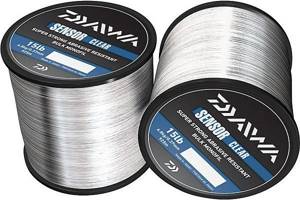
The material from which the fishing lines are made has a transparent structure and is hardly noticeable in water, but at the same time, with some chemical processes, manufacturers have achieved stable colors of the cord that do not fade over time and retain their brightness throughout the entire period of operation of the thread. We also note the fact that the color spectrum is incredibly wide and varies from natural black colors to exotic colors that immediately catch the eye due to their distinctness and high saturation.
Monofilament has a lower specific gravity compared to other types of fishing threads, and we also focus on the fact that rigs with fishing lines, which are planned to be used for fishing with small-sized baits, have a significantly higher range than the same rigs with braided cords. The resistance in water of smooth threads is much less than braided ones, so retrieving a miniature bait at depths is more effective with monofilament than with other types of cords. An important quality is considered to be the absence of moisture accumulation in fishing lines, so the fishing line can be used at subzero temperatures without particularly worrying about freezing of the material. And, of course, the cheapness and availability of the product plays an important role in the popularity of the accessory.
The best fluorocarbon line for ice fishing
Fluorocarbon is a relatively new material made synthetically. Its main feature is almost complete invisibility in water. On the surface, the fishing line looks like ordinary nylon, but when it gets into the water, it refracts light and is lost. The catchability of such a fishing line is much higher, since the cord does not scare away the fish, and the fish sees only the jig offered to it. The only drawback is the relatively high cost. Our TOP includes the five most interesting options for fluorocarbon winter fishing line, which we present to your attention.
Cons of monofilament

As a result of this competition, classic fishing lines lose in terms of the ratio of strength to diameter of the material, and also have high stretch coefficients, which reduces the sensitivity of the equipment, especially when fishing at long distances, as well as the ability to tightly control the bait when making retrieves. The synthetic product is sensitive to ultraviolet radiation, losing its basic qualities and, in particular, strength, and often has a memory that is not entirely necessary for fishing threads, completely losing its original shape, imitating the bobbin of a reel or holder on which the cord is wound.
Parameters of monofilament line
The parameters of the fishing line depend on the physical and chemical properties of the material, which in turn are determined by the type of synthetic fiber, its thickness and size. To be fair, it is worth noting that certain secrets of thread production and its processing by one or another manufacturer also affect the product parameters and, although they are similar, the digital values of some characteristics may differ significantly from each other. We will consider the main parameters of the monofilament in the continuation of our article, revealing the main features of the characteristics.
Diameter
As a rule, the structure of a high-quality fishing accessory has a perfectly round cross-section, even along its entire length without differences in diameter. This feature indicates the stability of the structure, and therefore its reliability. The uniformity of the diameter facilitates the unhindered passage of the thread through the ring liners of the tackle, providing low resistance and, as a result, a high range of the rod, which is important when fishing with ultralight and light spinning rods. The diameter of the product is indicated by the manufacturer on the product packaging, most often expressed in millimeters that are familiar to us.
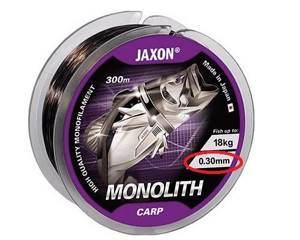
Load
The ability of a material to withstand forces of different trophy resistance is determined by the load parameter. When using fishing line, this characteristic is directly related to the diameter of the thread. By definition, the larger the diameter of the fishing line, the higher the load parameters that the accessory can withstand without losing the shape of the structure and its strength.
Important! Most often, a product is characterized by its ultimate breaking load, which reflects the amount of mass after exceeding which the material will fail, in other words, its rupture.
Loads are sometimes indicated on accessory packaging, and if there is no digital value, it can be determined using special tables of the relationship between the diameter and the accessory parameter we are considering.
Rigidity
The stiffness parameter characterizes the flexibility of the cord for laying, resistance to twisting, and abrasion. The stiffer the thread, the higher its abrasion limit, which, for example, is important when fishing on a feeder, on rocky and shell bottoms. Rigid cords are less prone to tangling and are more practical to put on leashes. At the same time, a rigid structure is afraid of creases, significantly losing its original strength. Kinks are the logical final end of any formed knot, which is a common practice in fishing rigs, which cannot be avoided in any type of fishing.
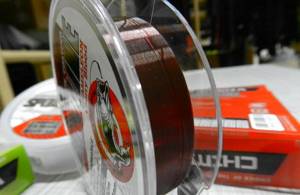
Stretching
We are sure that even for beginner fishermen there is no secret that even the best monofilament fishing line has a high stretch coefficient. In one case, this can be considered a positive point, because this property makes the process of catching large fish more reliable, absorbing the jerks of the trophy and thereby compensating for the resulting overload. But under circumstances that require high sensitivity and informative installation, thread stretching is a clear negative factor that worsens fishing conditions.
Important! Moreover, the further the hunting distance, the lower the information content of the equipment.
Therefore, it is recommended to use monofilament when fishing at short distances, where stretching does not have such a strong effect on the transmission of the bite signal. Manufacturers of the accessory are trying to reduce the value of the stretch coefficient as much as possible, thereby bringing the product closer to the parameters of braided threads, which is clearly not in favor of monofilament in comparison with its competitor.
Memory
Memory is the ability of a material to spontaneously return to its original state. In the case of monofilament, memory is considered a negative parameter that significantly worsens the comfort of the fishing process. The overwhelming majority of synthetic fiber, after being wound onto the drum of a reel or reel, during the moments of bringing the gear into working condition and unwinding the cord, comes off the device, following the contours of the spool, stretching in the form of a spiral.
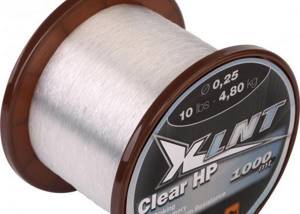
Such rings increase windage when casting and prevent the line from quickly sinking, which is not good for any type of fishing. In addition, the twisted structure loses its strength over time and can break at the most inopportune moment, and often when retrieving hooked fish. For timber manufacturers, reducing the memory of the synthetic cord structure is one of the initial tasks these days.
Interaction with water
Interaction with water, or the so-called hydrophobicity of the monofilament, also affects the condition of the fishing line. Compared to braids, monofilament cords have significantly less hydrophobicity, but still its effect on the material is quite significant. Even a small absorbency parameter causes the cord to swell and lose its strength. In addition to reducing the strength of the fishing line, it also loses the abrasion properties of the structure’s surface, and therefore deprives it of the possibility of reliable fishing on shell rocks and pebble bottoms.
In connection with this feature, seemingly waterproof monofilament threads should be thoroughly dried after each fishing trip, avoiding keeping them in conditions of high humidity, thereby maintaining the structure in a constantly functional state that does not lose its basic qualities. To do this, it is enough to leave a fishing rod, a bottom wound on a reel or a spinning reel removed from a spinning rod at room temperature in a dry, ventilated room.
What types of fishing lines are there?
Fishing line today has three main areas of production. Manufacturers produce monofilament, braided and fluorocarbon fishing lines. All these types of fishing lines of artificial origin are produced on the basis of polyamide materials, the main ones being: nylon, polyethylene and fluorocarbon.
Japanese and American companies are leaders in the production of synthetic threads. European and Chinese brands are more involved in unwinding and packaging cord, offering the buyer goods for certain fishing conditions and in certain quantities. Continuing the article, we will look at the main types of fishing line in more detail, revealing their advantages and disadvantages.
Monofilament
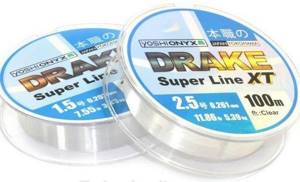
Monofilament fishing line is the most popular type of cord in amateur fishing and familiar to all fishermen. It is made from nylon material, invented by an American company in the mid-thirties of the last century. Monofilament is inexpensive, while at the same time remaining a fairly strong fishing line. Available in a wide range of thicknesses and color variations. A rigid and elastic thread promotes comfortable casting without causing any particular difficulties associated with tangling rigs. It is supplied to retail chains in bays or reels of various sizes.
Under certain storage conditions without exposing the material to ultraviolet rays and excessive dry air, it retains its original qualities for quite a long time without reducing their parameters. When completing gear, both the main cord and the leader material are used. Nylon fishing lines perform well even in wide ranges of temperature changes, generally without losing their performance. Therefore, monofilament is considered a cord close to a universal option for seasons.
Important! The disadvantages of this type of fishing line include high elongation, which limits the use of monofilament at long fishing distances, significantly reducing the sensitivity of the gear.
Otherwise, monofilament lines are suitable for all types of fishing and types of installations.
Fluorocarbon
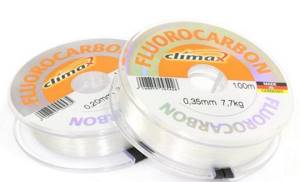
Fluorocarbon fishing lines appeared in the late sixties of the twentieth century as a result of the development of an innovative material by one of the Japanese chemical organizations. The fluorinated organic polymer has a high degree of transparency and is also resistant to aggressive chemical and physical environments. Does not lose its quality in a wide range of positive and negative temperatures. Fluorocarbon threads are not afraid of exposure to ultraviolet radiation, therefore they do not require special storage conditions and can be used in fishing even after ten years of storage.
Important! A significant disadvantage of this kind of thread is its low strength, which is expressed in increased thread diameters in relation to other accessories made from other materials.
In addition, fluorocarbon is more expensive than monofilament wood options and has greater rigidity. In fishing, this type of fishing line has taken root well as a typical leader material. Fluorocarbon is sometimes used as a shock leader. On sale, fluorocarbon fishing lines can be found in measured skeins or wound onto reels in small lengths.
Braided cord
Fishing line under the now firmly established name braid is made from ultra-high molecular weight polyethylene, first used for the manufacture of fishing accessories in the Netherlands in the seventies of the last century. The structure of a braided cord consists of weaving or sintering under the influence of high temperature several fibers of uniform properties and diameter.
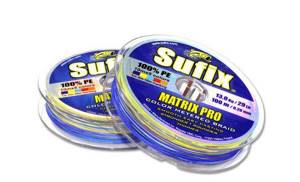
Important! Braids differ from other types of wood in their high strength with small material thicknesses.
Due to the low coefficient of stretching of the material, the thread allows you to assemble highly sensitive gear that transmits scanty and gentle bites, as well as quite clearly control the movements of the bait when retrieving it. It would seem that braid is quite an ideal cord for fishing, but in fact this is not so and braids have the largest number of negative aspects of their use. firstly, it is an expensive material, many times more expensive than monofilament.
In addition, braids are prone to tangling, and as a result of friction they quickly become frayed and become unusable. Its high visibility in water is also not in favor of wattle, and even at subzero temperatures, due to high water absorption parameters, the material is prone to freezing and losing all its performance characteristics. Braids are ideal for use in spinning types of fishing, such as twitching and jigging, which require meticulous control of the movement of baits, as well as the basis for bottom rigs operating over long distances.
Braided fishing lines are sold in reels starting from one hundred meters. They can be purchased in a huge number of colors and thicknesses. As a rule, high-quality braided fishing line lasts for two or three fishing seasons, after which the material begins to lose its main quality, namely strength.
What to look for when buying monofilament fishing line
When choosing a product for fishing tackle, pay attention to the packaging of the product and the label on which the main operating parameters of the cord must be indicated, such as diameter and breaking load. Before purchasing, the thread is visually inspected for the absence of structural irregularities and surface roughness. Along the entire length of the thread, the diameter should be even, without quicksand or distortion of its rounded shape.
It would be useful to check the fishing line for rupture by normal stretching. When stretched, you should feel the elasticity of the material and its springiness, which, after reducing the load on the cord, will return it to its original state. They also pay attention to the intensity and uniformity of color. There are no cloudy spots on high-quality monofilament. When pulling the thread through his fingers, the fisherman should feel a smooth and slippery structure, which, after pulling, should exhibit twisting properties to the least extent possible, following the contours of the bobbin on which the material was stored.
Features of choosing fishing line
The choice of monofilament fishing line is dictated by the planned method of fishing. So, when fishing with a spinning rod using uniform strokes when fishing short distances, a regular monofilament cord, suitable for the expected diameter and breaking load of the trophy, is quite justified. For float rods of any type, fishing line is the classic type of cord. In feeder fishing, they prefer setting rigid lines with low stretch coefficients. Fishing is also preferable at short and medium distances.
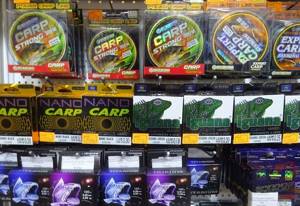
Leaders are made from monofilament for almost all types of fishing. And the combination of a hard quivertip and monofilament line allows you to assemble sensitive tackle. Also, when choosing a suitable cord, be sure to pay attention to the volume of the bobbin or the length of the thread, which should exceed the fishing distance in size, since tying the material with the aim of increasing its length is not an entirely acceptable option, which reduces the reliability of any type of gear.
Types of fishing lines
There are three main types of fishing line: monofilament (monofilament), fluorocarbon (fluorocarbon), and braided lines. Nanofil stands out for some. Each type, due to its characteristics, is intended for effective use in certain situations.
Monofilament line
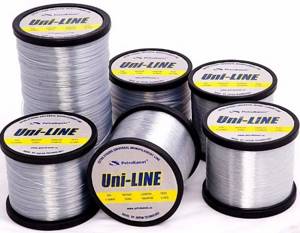
After entering the era of New synthetic polymers in 1938, nylon took first place in strength and elasticity among other textile fibers (cotton, silk, rayon). The production of fishing lines has taken off. Fishermen appreciated the new product that hit the shelves and to this day monofilament remains the most popular among beginners and fishing professionals. They account for more than 2/3 of all fishing lines sold.
As the name suggests, monofilament line is a one-component product. It is formed during the extrusion process when a molten polymer is passed through a matrix, where the output is a homogeneous thread with a given diameter.
The process is relatively inexpensive, which is what made it so popular. However, it is worth remembering that the criterion “price - quality” is still relevant. Cheaper mono lines usually do not receive the necessary quality control that premium lines do. As a result, the characteristics so necessary for fishermen - tensile strength and knot strength, elasticity, abrasion resistance - are simply lame.
Braided cords
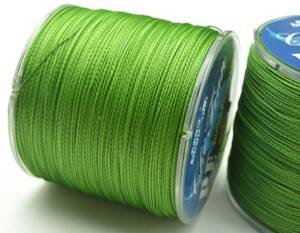
In the early 1990s, Spectra, Kevlar, and Dyneema fibers began to hit the market. These synthetic derivatives are very thin and incredibly durable. Fibers woven into “braids” increase their characteristics.
Early defects (low knot strength, loose weaving, poor coloring, abrasion resistance) are gradually being minimized by manufacturers of braided cords.
Fluorocarbon (fluorocarbon) fishing line
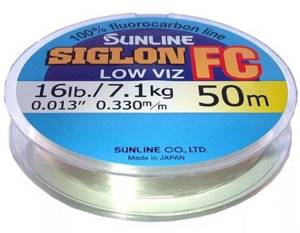
Fluorocarbon is a polymer that is nearly invisible in water because it has an almost identical refractive index (the process by which light bends or bends as it passes through a substance). Inert, resists sunlight, gasoline, battery acid, and insect repellents. Does not absorb water.
Due to its rigidity and abrasion resistance, in our country fluorocarbon fishing line has found its use mainly in the form of leashes and shock leaders.
Shock
-
a leader
is a piece of thick fishing line that is attached to the end of a thinner main fishing line in order to take on all the load that occurs when casting and during the process of landing fish
However, with small diameters, fluor completely replaces monofilament and braided lines when fishing with ultralight.
Nanofil
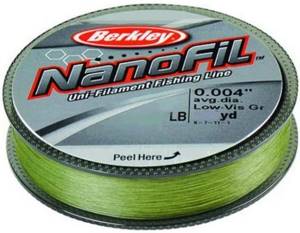
Externally, the nanofil resembles a regular monofilament line. Smooth and slippery to the touch, but with virtually zero memory and stretchability. It's all about production. Nanofil thread consists, like a braided cord, of several individual fibers, but in addition to the weaving, the soldering process occurs. The result is a multifilament thread with a mono appearance.
The initial stiffness goes away after a couple of fishing trips. In white it is quite easily soiled. Not a bad fishing line, but it didn’t work out for me in the spring-summer season - I found an excellent replacement, which I still use. And for fishing with a spinning rod after the first frost or on warm winter days, I don’t really see any alternative.
Rating of popular monofilament fishing lines
Continuing the article, we present to the reader the top 10 most popular and reliable accessories that can be purchased in our domestic fishing stores at a very affordable price.
- We give first place to the Japanese Mikado with Nihonto Carp , which is characterized by low memory and structural reliability under increased loads. The accessory is offered to the fisherman in a wide range of colors.
- Next we place the monofilament Owner Broad , with low sensitivity to ultraviolet light. A product with a diameter range of 0.02 mm allows you to select a cord for any type of fishing and the size of the trophy.
- The third line behind the modern version of the Balsax RXR Kameleon . A line with high abrasion resistance and low loss of strength at the knots.
- The fourth monofilament in the ranking is Tarantula . Having even high stretch coefficients, the thread is characterized by increased strength.
- The top five is closed by a monofilament from Shimano, with the Technium Spinning Line . Low elongation and increased rigidity make the accessory suitable for effective spinning fishing.
- In sixth position we have the Italian brand Maver with the monofilament model Smart Dual Band . Ultra-strong monofilament with high softness has a low memory parameter.
- Seventh in the top of popular fishing lines we put Salmo Hi-Tech Evolution . The material with specific chemical additives in its structure received high strength, along with elasticity and low elongation.
- Position eight is held by Gamakatsu Super G-Line . A universal premium fishing line suitable for equipping various fishing gear.
- Varivas Super Trout Advance Twitch Master low stretch monofilament rod . The cord manufacturer has achieved significant success in the production of the product, resulting in low percentage loss of strength at the knots.
- Rounding out our top 10 is Cralusso Feeder & Carp Fishing Line . Monofilament for feeder fishing with high resistance to abrasive waters. Excellent resistance to dynamic loads of massive trophies.
Monofilament storage requirements

Even despite the high positions in the rating of monofilament fishing line of individual models and manufacturers, we note the fact that all accessories are susceptible to destruction from exposure to ultraviolet radiation or direct sunlight.
Important! Therefore, one of the features of storing wood is keeping it in dark places without access to sunlight.
Also, fishing lines are afraid of high temperatures, which dry out the structure and make it fragile. High humidity, on the contrary, loosens the material, reducing the reliability of the thread. In all cases, the optimal option for storing reels is to keep the wood at normal room temperature and humidity in boxes closed from light. The same recommendations should be followed when storing fishing gear from which reels and reels with main lines cannot be removed. Storing them in warm storage rooms is the best option.
